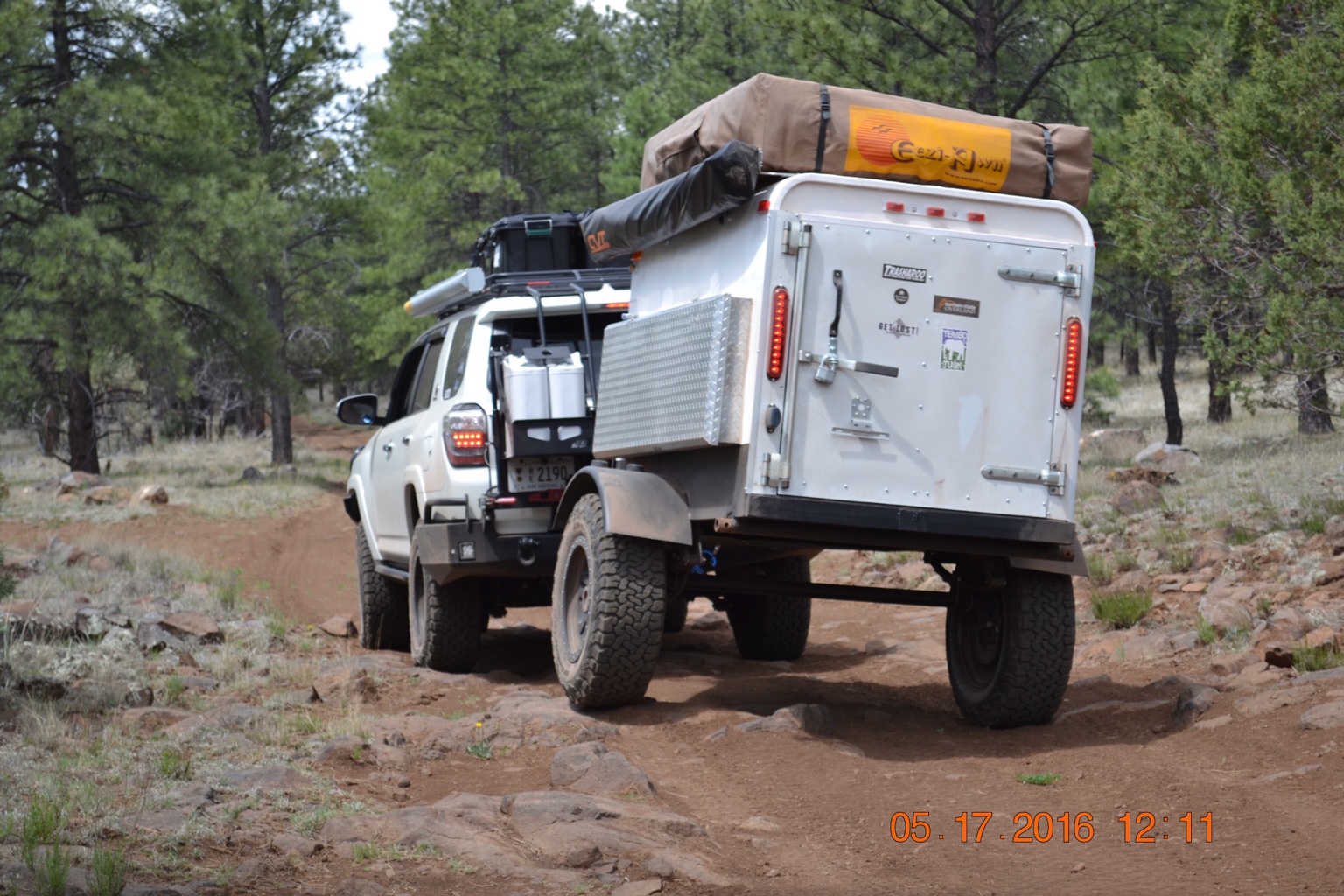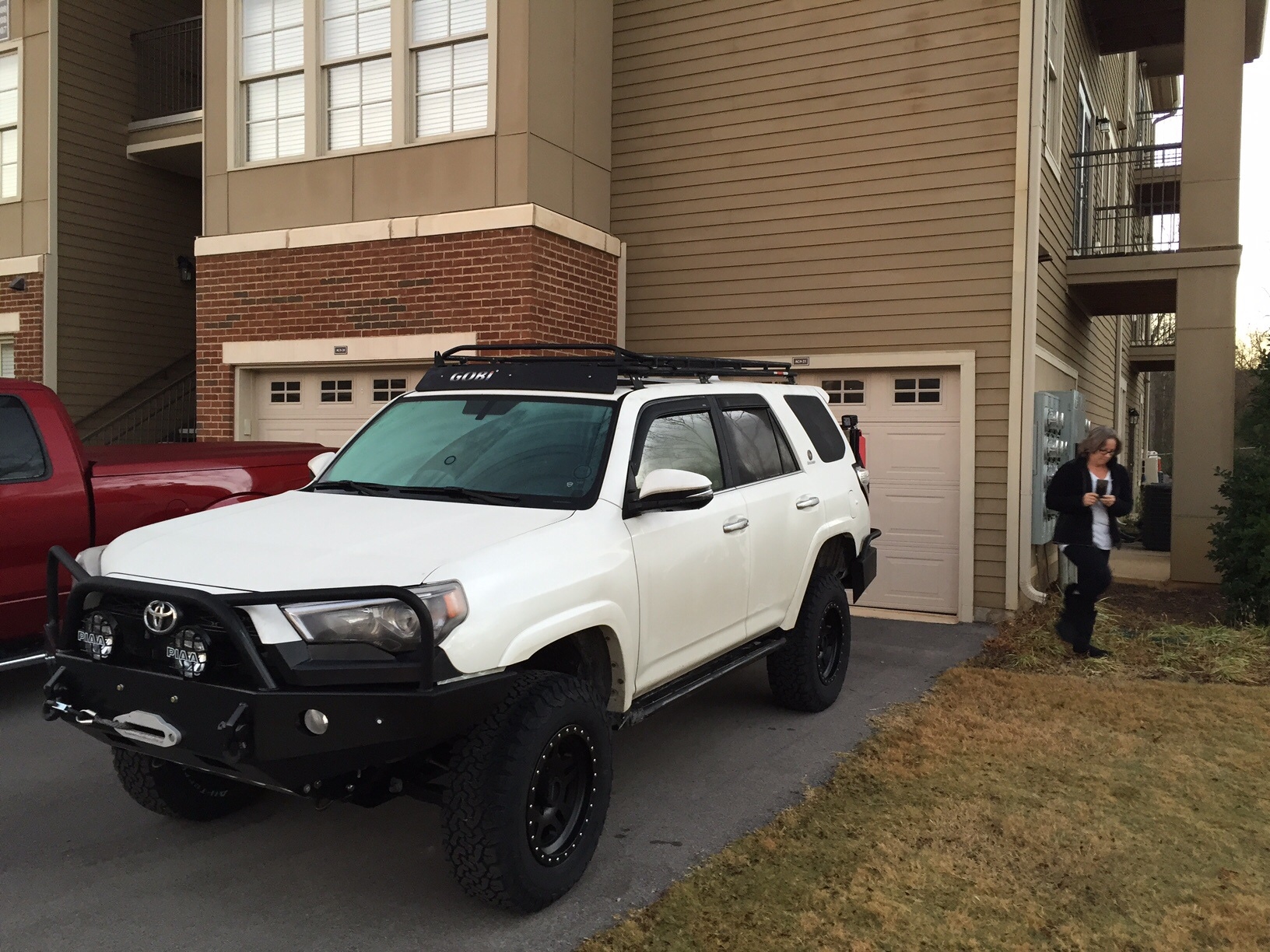What is a safe pressure to deflate to when offroading?
Is there a technical means to determine this pressure?
Thanks.
Is there a technical means to determine this pressure?
Thanks.

Benefactor
0000

Enthusiast III

Pathfinder II

Benefactor
0000

Pathfinder I
0460

Benefactor
0000

Pathfinder I
0460

Benefactor
0000

Pathfinder II

Pathfinder I
0460



Benefactor
0000
Hey rmerron I ust Staun. They are the spendy version, but I've had both and recommend spending the extra coin: Tire DeflatorsMichael, where did you get those cool deflators you use in your video? That seems like a good devise if you know you want to go to a specific pressure quickly.

Benefactor

Pathfinder I
0460

Enthusiast III
I was just scanning through posts when I come across the often talked about tire pressure question. At Overland East I did the BF Goodrich drive with a company engineer. He warned me that lowering the pressure would lower the tires ability to fend off punctures. So be careful out there.What is a safe pressure to deflate to when offroading?
Is there a technical means to determine this pressure?
Thanks.
That's an odd statement. While running at a lower PSI will mean you are running a little bit on the sidewalls exposing them to things, but, the lower internal pressure means less chance of actual puncture. Think of a balloon being inflated a little or a lot. the one inflated a lot is easier to pop. I think that engineer's answer was a little oversimplified.I was just scanning through posts when I come across the often talked about tire pressure question. At Overland East I did the BF Goodrich drive with a company engineer. He warned me that lowering the pressure would lower the tires ability to fend off punctures. So be careful out there.
Sent from my iPad using OB Talk
